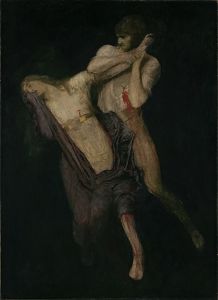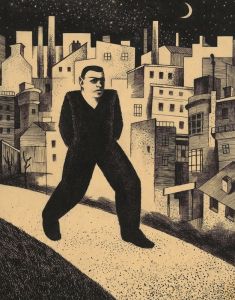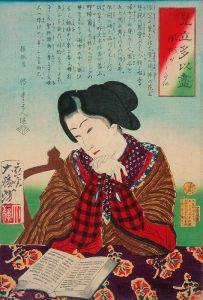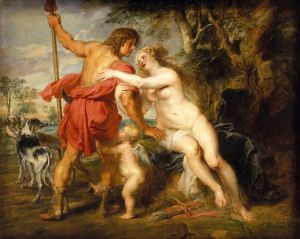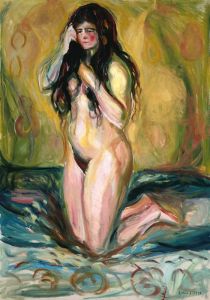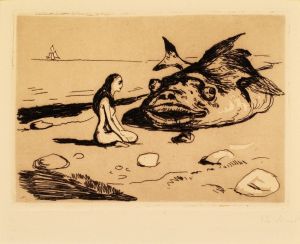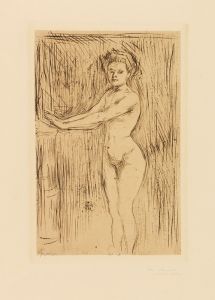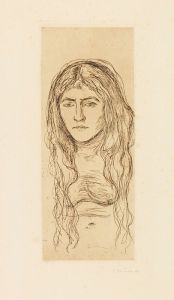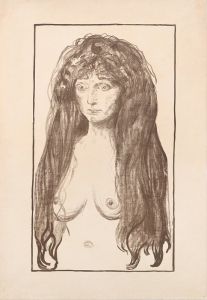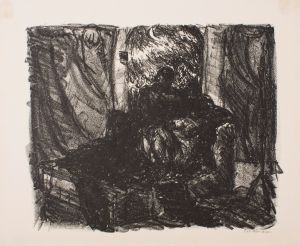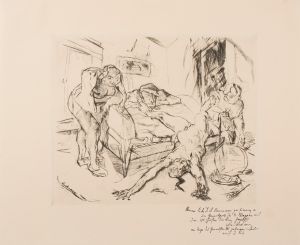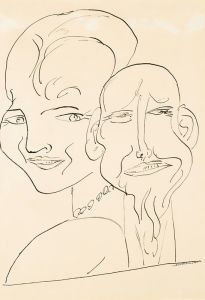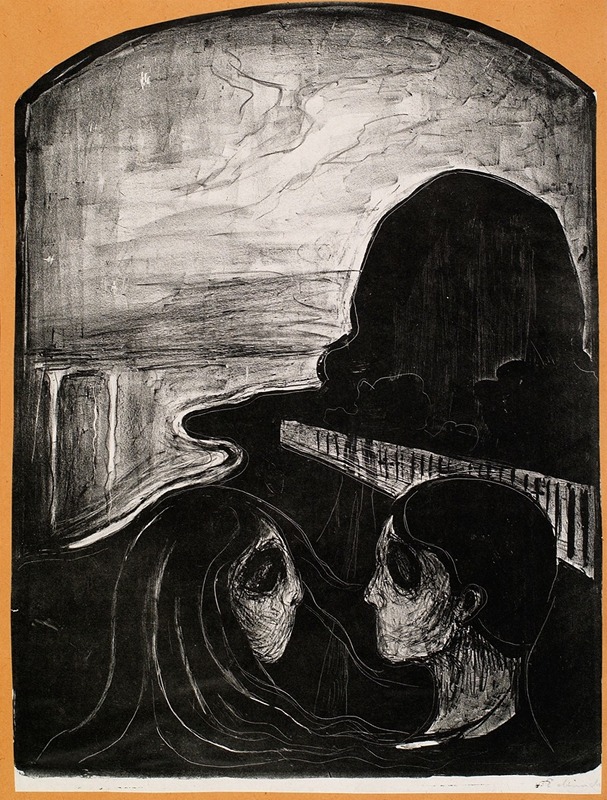
Attraction I
A hand-painted replica of Edvard Munch’s masterpiece Attraction I, meticulously crafted by professional artists to capture the true essence of the original. Each piece is created with museum-quality canvas and rare mineral pigments, carefully painted by experienced artists with delicate brushstrokes and rich, layered colors to perfectly recreate the texture of the original artwork. Unlike machine-printed reproductions, this hand-painted version brings the painting to life, infused with the artist’s emotions and skill in every stroke. Whether for personal collection or home decoration, it instantly elevates the artistic atmosphere of any space.
Edvard Munch's Attraction I is a lithograph created in 1896 by the renowned Norwegian artist, best known for his emotionally charged and symbolically rich works. This piece is part of Munch's broader exploration of human emotions and relationships, themes that are central to his artistic legacy. Attraction I reflects Munch's interest in the psychological and existential dimensions of human experience, which he often conveyed through evocative imagery and innovative techniques.
The lithograph depicts a man and a woman locked in an intimate embrace, their forms merging in a way that suggests both physical closeness and emotional entanglement. The figures are rendered with a sense of fluidity, emphasizing the connection between them while also hinting at the complexities of desire and attraction. The composition is minimalist, with a focus on the figures and their interaction, which allows the emotional intensity of the scene to take center stage.
Munch's use of lithography for this work is significant, as it demonstrates his mastery of printmaking techniques and his ability to convey depth and texture through a monochromatic medium. Lithography allowed Munch to reach a wider audience by producing multiple copies of his works, and it became an important part of his artistic practice during the 1890s. The stark contrasts and bold lines in Attraction I are characteristic of Munch's graphic works, which often explore themes of love, anxiety, and the human condition.
This lithograph is part of a series of works by Munch that delve into the complexities of human relationships, including love, jealousy, and separation. These themes are also prominent in his famous series The Frieze of Life, which includes iconic works such as The Scream and Madonna. While Attraction I is less well-known than some of Munch's other pieces, it is a compelling example of his ability to distill complex emotions into powerful visual forms.
As with many of Munch's works, Attraction I reflects the influence of Symbolism, a movement that sought to express the inner workings of the mind and soul through art. Munch's interest in psychology and existential themes was also shaped by his personal experiences and the cultural currents of his time, including the writings of philosophers and psychologists such as Friedrich Nietzsche and Sigmund Freud.
Today, Attraction I is recognized as an important example of Munch's printmaking and his exploration of universal human experiences. It continues to be studied and appreciated for its emotional depth and artistic innovation.





